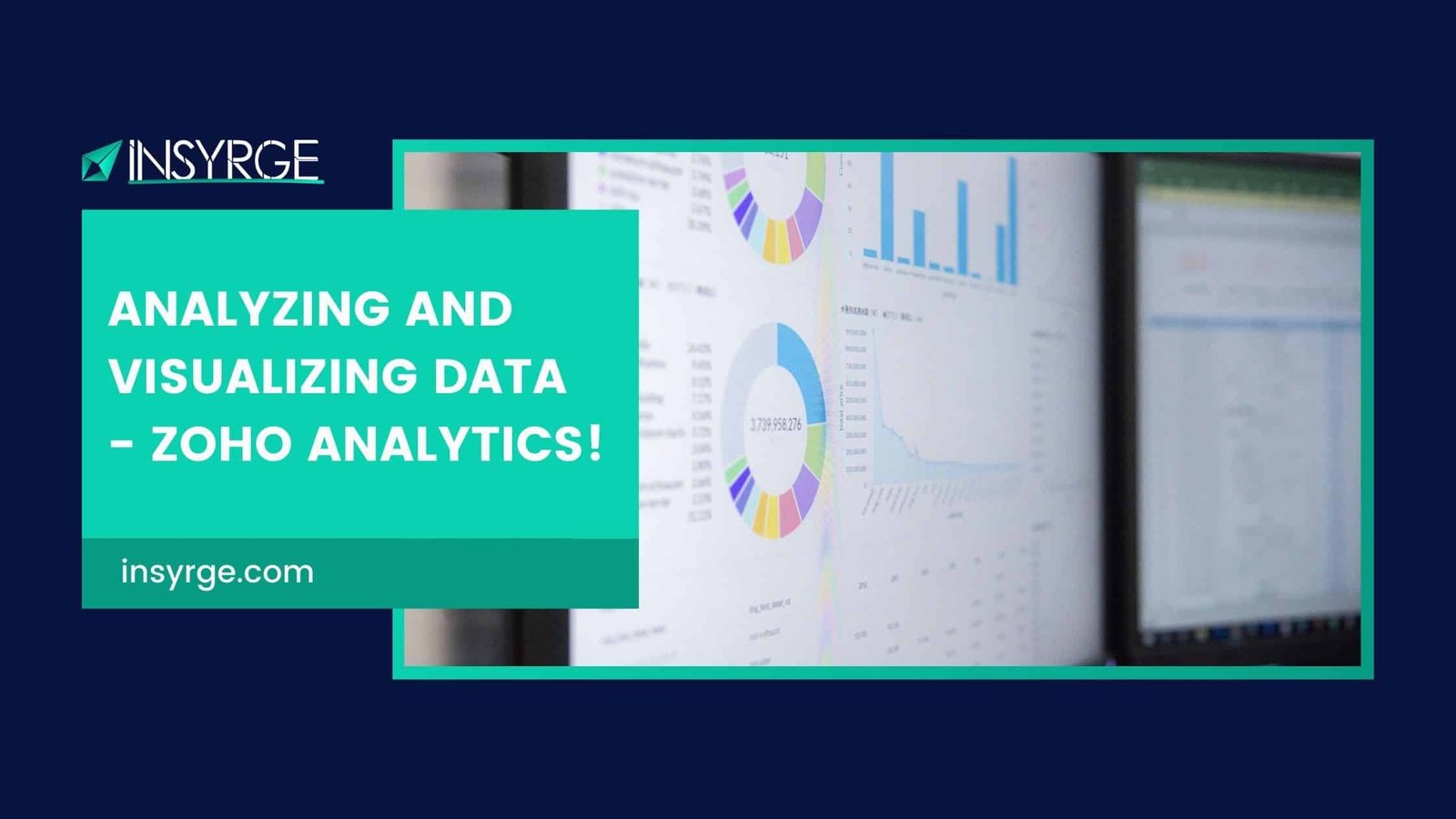Decoding Insights: An In-Depth Exploration of Analyzing and Visualizing Data in Zoho Analytics
In the era of big data, organizations are continually seeking ways to convert raw information into actionable insights. Zoho Analytics, a robust business intelligence tool, serves as a powerful ally in this quest, offering advanced capabilities for analyzing and visualizing data. In this comprehensive guide, we’ll delve into the intricacies of data analysis and visualization in Zoho Analytics, exploring the features and techniques that empower users to derive meaningful conclusions from their datasets.
Understanding the Essence of Data Analysis
Data analysis is the systematic process of inspecting, cleaning, transforming, and modeling data to uncover valuable information, draw meaningful conclusions, and support decision-making. Zoho Analytics excels in providing a platform where users can explore, interpret, and analyze data from various sources with ease.
Key Features of Zoho Analytics for Data Analysis
1. Versatile Data Integration
Zoho Analytics allows users to seamlessly integrate data from a variety of sources, including databases, spreadsheets, cloud applications, and more. This versatility ensures that all relevant data can be consolidated into a single, accessible location for comprehensive analysis.
2. Intuitive Data Cleaning and Transformation
Clean and transform raw data effortlessly within Zoho Analytics. The platform provides user-friendly tools to address issues such as missing values, duplicates, and inconsistencies, ensuring that data is prepared for meaningful analysis.
3. Advanced Analytics Functions
Zoho Analytics goes beyond basic reporting, offering a spectrum of advanced analytics functions. From statistical analysis to predictive modeling, users can leverage these capabilities to extract deeper insights and make more informed decisions.
4. Real-Time Data Access
Access real-time data within Zoho Analytics, facilitating dynamic and responsive data analysis. The ability to connect to live data sources ensures that users are working with the most up-to-date information for accurate decision-making.
Analyzing Data in Zoho Analytics: A Step-by-Step Guide
1. Data Source Connection
Begin by connecting your data sources to Zoho Analytics. The platform supports a wide range of connectors, allowing you to seamlessly import data from databases, spreadsheets, cloud applications, and more.
2. Importing and Cleaning Data
Import your data into Zoho Analytics and use the platform’s tools to clean and transform raw data. Address issues such as missing values, duplicates, and inconsistencies to ensure that your data is ready for analysis.
3. Exploratory Data Analysis (EDA)
Engage in exploratory data analysis to understand the structure and patterns within your dataset. Zoho Analytics provides tools for descriptive statistics, data profiling, and initial visualization to unveil insights.
4. Statistical Analysis
Leverage Zoho Analytics’ advanced analytics functions for statistical analysis. Perform hypothesis testing, regression analysis, and other statistical tests to uncover relationships and patterns within your data.
5. Predictive Modeling
Explore predictive modeling within Zoho Analytics to make informed forecasts and predictions. Whether you’re anticipating sales trends, customer behavior, or resource needs, the platform’s predictive modeling capabilities empower you to look into the future based on historical data.
6. Data Drilling and Exploration
Enable data drilling and exploration within Zoho Analytics. Users can delve deeper into data points, pivot tables, and cross-tabulations, revealing underlying details and fostering a more profound understanding of trends and outliers.
Visualizing Data in Zoho Analytics: A Comprehensive Overview
1. Choosing Visualization Types
Zoho Analytics offers a diverse range of visualization types, including tables, charts, graphs, and maps. Choose the visualization type that best represents your data and enhances comprehension.
2. Customizing Visualizations
Tailor visualizations to suit your analytical needs. Adjust colors, labels, and axis scales to enhance clarity and make your visualizations more impactful. Customization ensures that your visualizations align with your organization’s branding and presentation standards.
3. Creating Dashboards
Aggregate visualizations into comprehensive dashboards within Zoho Analytics. Dashboards provide a centralized hub for displaying key metrics and trends, fostering a holistic view of your organization’s performance.
4. Dynamic Dashboard Interactivity
Enhance user engagement by configuring dynamic dashboard interactivity. Allow users to interact with visualizations, apply filters, and explore specific data points dynamically, fostering a more personalized and immersive analytics experience.
5. Real-Time Dashboards
Enable real-time dashboards to ensure that the information displayed is always current. Zoho Analytics supports automatic data refresh at predefined intervals, keeping your dashboards up to date without manual intervention.
Real-World Applications: How Zoho Analytics Transforms Industries
1. Sales and Marketing Optimization
Leverage Zoho Analytics to analyze sales performance, monitor marketing campaign effectiveness, and identify customer trends. Visualize data to optimize strategies, enhance customer engagement, and empower sales and marketing teams.
2. Financial Planning and Analysis
Craft visualizations for financial reports and dashboards in Zoho Analytics to facilitate budgeting, forecasting, and performance analysis. Visualize revenue streams, expenses, and financial trends for more informed decision-making.
3. Human Resources Management
Transform HR processes by visualizing employee performance, workforce analytics, and talent management data. Create visualizations that optimize recruitment, streamline performance reviews
, and enhance overall HR efficiency.
4. Operations and Supply Chain Management
Zoho Analytics provides tools for visualizing production efficiency, inventory levels, and supply chain performance. Streamline operations, reduce bottlenecks, and optimize resource allocation based on visually presented insights.
Conclusion: Elevating Data-Driven Decision-Making with Zoho Analytics
In conclusion, Zoho Analytics is a powerful ally for organizations seeking to unlock the full potential of their data. The platform’s robust data analysis and visualization capabilities empower users to derive meaningful insights, make informed decisions, and drive organizational success.
By mastering the art of analyzing and visualizing data in Zoho Analytics, businesses can turn raw information into actionable intelligence. From statistical analysis to predictive modeling, exploratory data analysis to visually compelling dashboards, Zoho Analytics provides a comprehensive toolkit for organizations of all sizes and industries.
Embrace the power of data-driven decision-making with Zoho Analytics and embark on a journey where insights transform your organization’s approach to strategy, operations, and innovation. Welcome to a future where data is not just information; it’s the key to unlocking limitless possibilities for your organization.
If you have any questions please forward them to info@insyrge.com




